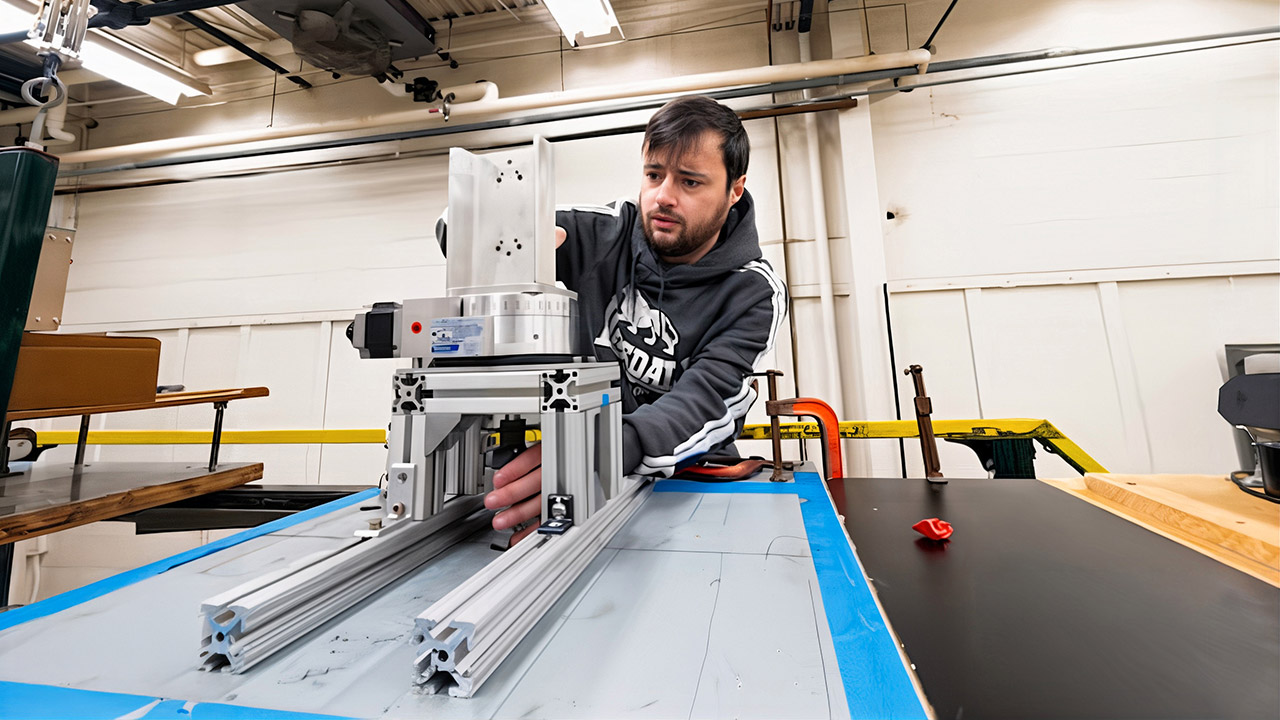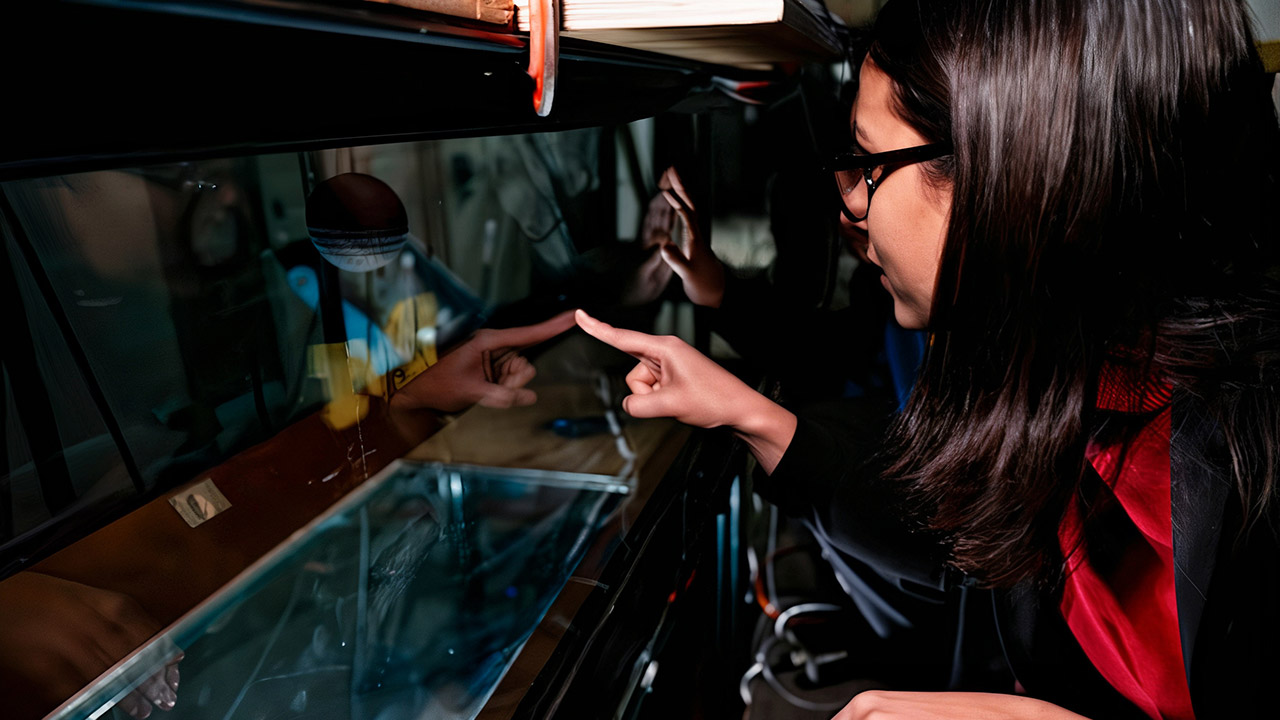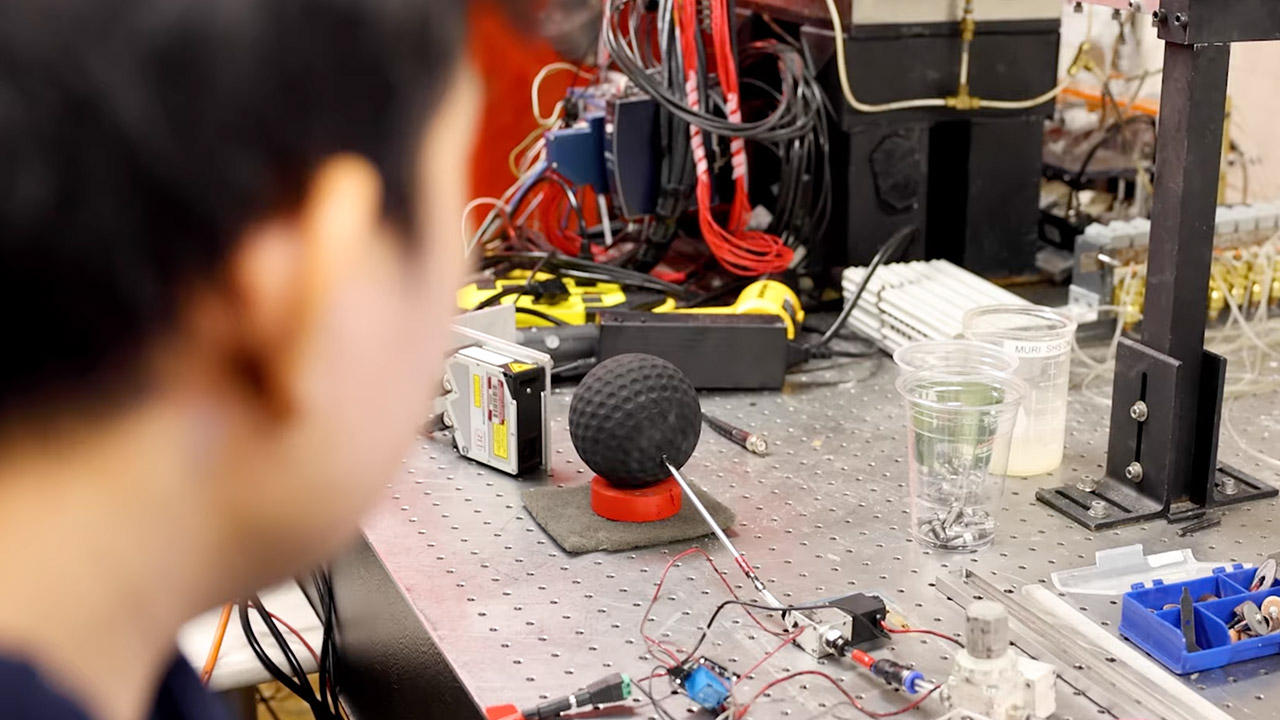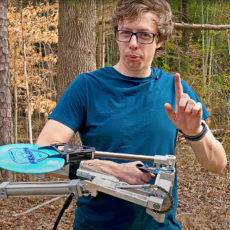
Photo credit: Jeremy Little, Michigan Engineering
A golf ball seems like an unlikely muse for high-tech innovation. It’s just a small, dimpled sphere meant to fly far on a golf course. But at the University of Michigan, engineers have turned its design into a clever underwater robot. This spherical prototype, covered in changeable dimples, moves through water with impressive ease and control, hinting at new possibilities for exploring oceans or even skies.
Golf balls travel farther thanks to their dimples, which create a thin layer of swirling air to reduce resistance. Anchal Sareen, an assistant professor of naval architecture and marine engineering, saw this idea working underwater. “By actively adjusting its surface texture, the vehicle could achieve precise maneuverability with enhanced efficiency and control,” she says. Her team’s robot, about the size of a soccer ball, isn’t just a static sphere. This robot’s surface can swiftly switch from smooth to dimpled, slicing through water resistance and maneuvering effortlessly.
- 【Multi-target Golf Practice Net】10 x 7ft golf net is set with a central target and 4 target pockets , which is carefully designed to improve your...
- 【Strong and Impact-Resistant Materials】Our golf net is made of 600D Oxford cloth, 250g high-density net and 0.45-inch thick reinforced fiberglass...
- 【Swing Practice Anytime, Anywhere】Our golf practice net allows you to break through the limitations of venues and time and practice golf anytime,...

Put simply, it moves more like a fish than a clunky submarine. “I was surprised that such a simple approach could produce results comparable to the Magnus effect, which requires continuous rotation,” says Putu Brahmanda Sudarsana, a graduate student in mechanical engineering who helped develop it.

To test it, researchers used a wind tunnel to mimic water flow, watching a 3D-printed prototype adjust its dimples. Results, published in Flow and The Physics of Fluids, showed it could slip through resistance and steer smoothly by creating uneven lift, like a curving pitch in baseball. This knack for gliding without extra bits makes it ideal for squeezing into cramped spots like shipwrecks or coral reefs.

The robot’s design is a total chameleon. Underwater, it could slip into super-tight nooks where bulkier rigs fumble. In the air, it could spark drones that dance with sharper agility.. “This smart dynamic skin technology could be a game-changer for unmanned aerial and underwater vehicles, offering a lightweight, energy-efficient, and highly responsive alternative to traditional jointed control surfaces,” Sareen explains. With no protruding parts, it’s less likely to get stuck or damaged.

This golf ball-inspired robot is a serious efficiency champ. By slashing drag, it sips energy, letting it roam farther or work longer, such as mapping the ocean depths or inspecting underwater pipelines without a pit stop. The prototype has yet to face real-world waters, and crafting tough, responsive dimples is no easy feat. Still, this clever bot could soon zip through oceans or even skies with finesse.










